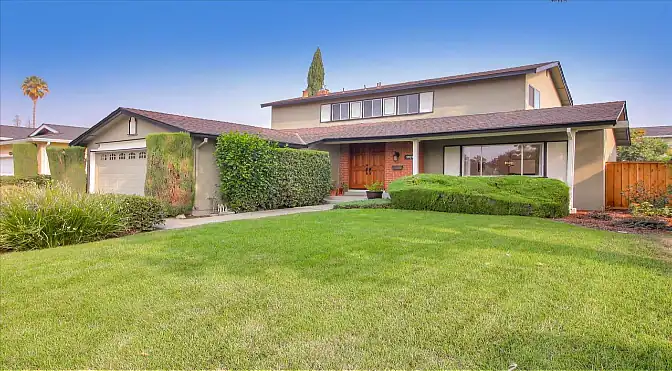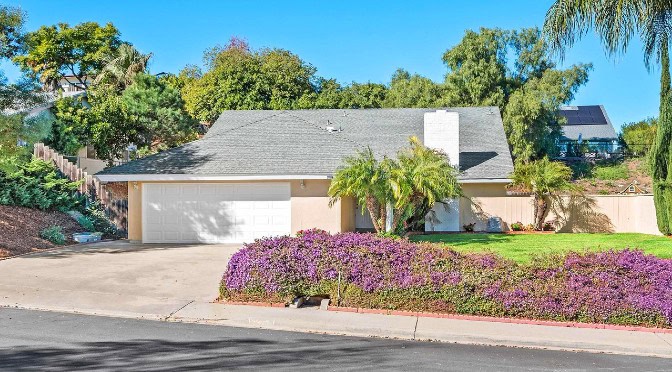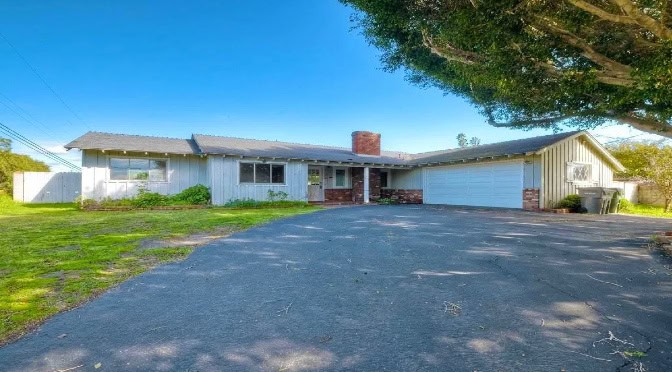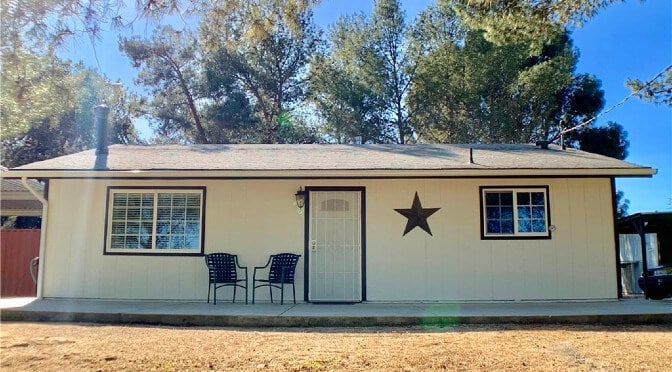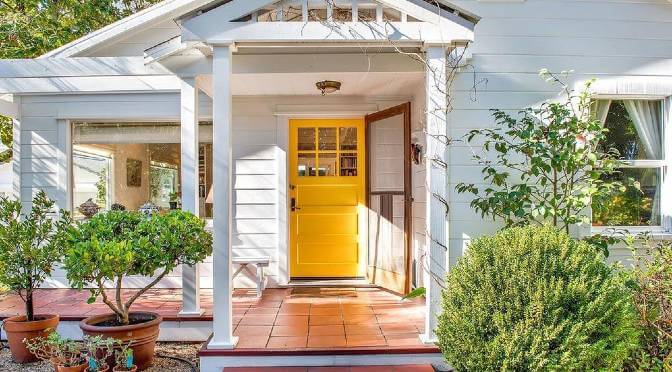Residential Bridge Loan Lenders
Bridge Loan Financing & Mortgages for California Real Estate
Bridge Loan Request
We will contact you to review the loan scenario and provide a quote.
Direct California Residential Bridge Loan Lenders
North Coast Financial is a direct California bridge loan lender based in San Diego with more than 40 years of experience providing real estate investors and homeowners with commercial and residential bridge loans (consumer bridge loans). Offering fast approvals and funding, competitive rates and reliable service for direct bridge loan financing, North Coast Financial has become one of the top hard money residential bridge loan lenders in California.
Bridge lending provides borrowers with quick funding to provide a short-term financing solution. In many situations, bridge financing can be the best option to quickly borrow against the existing equity within real estate. A hard money bridge loan can be funded within days for investment property. An owner occupied residential bridge loan will take approximately 2-2.5 weeks due to current federal regulations that all lenders must comply with. Private bridge loans from hard money lenders can be approved and funded faster than any other source of bridge loan financing. North Coast Financial also provides commercial bridge loans.
Real Estate Bridge Loan Lenders for California
A direct California bridge loan lender, North Coast Financial provides short-term bridge loans in Los Angeles, Orange County, San Diego, San Francisco Bay Area, Riverside, Ventura, Sacramento, San Bernardino, San Jose, Long Beach, Pasadena, Irvine, Glendale and various other counties and areas in the state of California. Contact North Coast Financial now and have your real estate bridge loan mortgage funded fast.
Why Choose North Coast Financial?
Recently Funded Bridge Loans by North Coast Financial
Recent Deal – San Jose Bridge Loan Refinance
San Jose Bridge Loan Refinance North Coast Financial provided a $900,000 bridge loan refinance against an owner occupied property in San Jose, California (Santa Clara County). The borrowers needed fast bridge financing against their current primary residence in order to purchase a new primary residence out of state with an all-cash offer. The loan to value was approximately 36%. The sale of the existing primary residence repaid the bridge loan that was [...]
Recent Deal – San Diego Bridge Loan
San Diego Bridge Loan North Coast Financial provided a $575,000 bridge loan against a primary residence in San Diego, California. The loan amount secured by the primary residence had a loan to value of approximately 45%. The borrower needed to borrow against equity in their current primary residence in order to purchase a new property out of state. Once the borrower had an accepted purchase contract for the new primary residence, the [...]
Recent Deal – Encinitas – San Diego Bridge Loan
Recent Deal - Encinitas - San Diego Bridge Loan North Coast Financial provided a $1,250,000 bridge loan for the purchase of a primary residence in Encinitas, California (San Diego). The loan amount secured by the primary residence had a loan to value of approximately 66%. The borrower needed to purchase the new primary residence prior to selling the existing residence to prevent having to move twice. North Coast Financial is an experienced [...]
Recent Deal – Paso Robles Bridge Loan
Paso Robles Bridge Loan North Coast Financial provided a $390,000 bridge loan in Paso Robles, California (San Luis Obispo County). The loan was secured by single family residence. The loan to value was approximately 68%. Recent Bridge Loans Funded by North Coast Financial California Bridge Loan Request
Recent Deal – Sebastopol Bridge Loan
Sebastopol Bridge Loan A residential bridge loan of $575,000 was provided by North Coast Financial. A single family residence in Sebastopol (Sonoma County) was used as collateral for the bridge loan. The loan proceeds from the bridge loan were used to purchase a new primary residence for the borrower. The loan to value ratio was approximately 52%. Recent Bridge Loans Funded by North Coast Financial California Bridge Loan [...]
Hard Money Bridge Loans & Financing
What is a Bridge Loan?
In its most basic form, a real estate bridge loan is short-term financing provided to a borrower to allow them to purchase a property before their currently owned property is sold. Bridge loans are short-term loans for real estate transactions which generally require quick funding.
A property owner uses a short-term bridge loan to borrow against the equity in their existing property to finance the purchase of a new property. As soon as the new property is acquired, the previous property is sold in order to pay off the bridge loan. Bridge loans can also be utilized in reverse order by obtaining the loan against the new property being purchased and then paying off this loan when the previous property is sold.
Bridge loan financing typically has a term of less than 12 months. North Coast Financial are direct California bridge loan lenders able to provide funding for hard money bridge loans on investment property within a matter of days. Owner occupied residential bridge loans take longer to fund (generally 2-3 weeks) due to current federal regulations that must be followed.
RELATED: What is a bridge? How does a bridge loan work?
Owner Occupied Bridge Loans
Owner occupied bridge loans can allow a homeowner to leverage equity in their existing residence to purchase a new residence prior to selling the existing residence. An owner occupied bridge loan can be secured by the existing property, the new property being purchased, or if needed, against both properties. A bridge loan against the existing property can pull out funds for the down payment of the purchase of the new property. An additional bridge loan can then be secured against the new property to complete the purchase.
Owner occupied bridge loans give borrowers with sufficient home equity quick and easy financing options, even when they aren’t able to qualify for conventional financing based on their current income.
Home Bridge Loans – Bridge Loans for Home Purchase
Home bridge loans can be used in various ways depending on the needs of the borrower. The home bridge loan can be secured against the existing home to pull out equity in order to purchase the new property.
A bridge loan for home purchase is typically used when the borrower already has a sufficient down payment for the purchase of the new home. In this scenario, the home bridge loan is secured by the new home being purchased.
If needed, the borrower can obtain 2 home bridge loans, a bridge loan against their current home to pull out equity for a down payment and another bridge loan to fund the remaining balance on the purchase of the new home. Bridge loans for home purchases are the fast and easy way to secure a new home before selling an existing home.
Various Types of Real Estate Bridge Loans
Various real estate bridge loans on multiple property types are available, from bridge loans for real estate investors purchasing new investments to residential bridge loans for homeowners moving to a new home. North Coast Financial has the expertise to offer many different types including bridge loans for residential real estate, business bridge loans, bridge loans for home purchase (owner occupied bridge loans), commercial bridge loans and bridge loans for investment property.
Real estate bridge loans are known by many other names including:
- bridging loan
- bridge financing
- bridge loan mortgage
- bridge mortgage
- gap financing
- caveat loan
- interim financing
- swing loan
Multifamily Bridge Loans
A multifamily bridge loan is a short-term financing tool that allows a borrower to quickly purchase or refinance a multi unit property. The short-term multifamily bridge loan gives the borrower time to make any needed repairs or improvements, lease any vacant units and then refinance with long-term financing. Multifamily bridge lenders typically specialize in short-term lending of 1-2 years and are able to fund quickly to help the borrower secure the property. Multifamily bridge loan rates are generally higher than what is available from long-term traditional lenders. Bridge financing for multifamily property is available for numerous property types including duplex, triplex, 4 plex (quadplex) and 5+ unit properties.
Residential Bridge Loans & Lenders
Residential Bridge Loans
A residential bridge loan is a popular way for real estate investors and property owners (homeowners) to borrow against their existing residential property in order to purchase a new property. Residential bridge loans for home purchase can also be used in the reverse order by securing the loan against the new property.
In many cases a property owner wishes to purchase a new owner occupied primary residence but doesn’t have the necessary liquid funds for a down payment. The property owner could sell their current residence and use the proceeds from the sale for the down payment (or all-cash offer), but they would then have to find temporary housing until the purchase of their new primary residence is complete. This logistical hassle of moving twice can be avoided with bridge loan financing from a residential bridge loan lender.
With a residential bridge loan, the property owner is able to pull equity from their existing property to raise a down payment or make a full cash offer for the purchase of a new home. Once the new property is acquired, the original property is sold in order to pay off the residential bridge loan.
Residential bridge loan lenders are less concerned with the credit worthiness of the borrower. Hard money bridge loan lenders focus primarily on value of the property and the borrower’s equity within that property. This is because real estate bridge loans are secured by the equity in the borrower’s home so the lender puts less emphasis on income verification or credit issues when considering whether or not to approve the private bridge loan. This is beneficial for borrowers who may currently have less than ideal credit or issues on their record but have sufficient equity in their property.
Residential bridge loan lenders are able to provide funding very quickly as the source of the funds is fast and flexible private money as opposed to institutional lenders such as banks and credit unions.
RELATED: Bridge Loan vs Home Equity Loan vs HELOC
Bridge Loans for Seniors and Retirees
A private bridge loan may be the only type of financing available to seniors and retirees who currently don’t have enough income to qualify for an owner occupied home loan. Seniors can obtain bridge loans and borrow against the equity in their home in order to purchase a new home without having to prove their income and be approved based on a debt to income ratio. The eventual sale of the previous home serves as the repayment of the private bridge loan.
Commercial Bridge Loans – Commercial Mortgage Bridge Loans
Commercial mortgage bridge loans are short-term loans for commercial real estate. They are available for commercial property owners who wish to borrow against their existing real estate to fund a down payment or raise funds for an all cash purchase of new commercial property. This is often done when a real estate owner is currently lacking sufficient liquidity but has plenty of equity to borrow against. Once the new commercial property is purchased, the borrower can then sell their original property in order to pay off the short-term commercial bridge loan.
Commercial bridge loans generally have a lower loan to value ratio (LTV) than residential bridge loans and the commercial bridge loan lenders may require additional information and documentation as commercial loans are typically more complex than residential.
Pros & Cons of Bridge Loans
Bridge loan mortgages can save time and money for real estate investors and homeowners in specific situations when funds are needed to purchase a new property before a currently owned property is sold. Ensure that the pros outweigh the cons prior to pursuing bridge loan financing.
Pros of a Bridge Loan
PRO – Quickly utilize equity within a property without selling
This primary benefit of a bridge loan is borrowing against the equity in an existing property to purchase a new property. Bridge loans for investment property can be funded within a few days if needed. Owner occupied residential bridge loan mortgages generally take 2-3 weeks due to current federal regulations. Hard money bridge loan lenders are able to provide much faster financing than banks that offer bridge loans.
PRO – Avoiding the inconvenience and cost of moving twice to purchase a new home
When a homeowner has sufficient equity in their primary residence but doesn’t have enough cash available for a down payment for the purchase of a new home, they may be forced to do the following:
- Sell their current home
- Move into temporary housing
- Purchase the new home
- Move into the new home
If the homeowner instead obtained a bridge loan for home purchase, this would allow them to only move a single time. Once they had purchased their new home they would move into it and then sell their existing residence to pay off the residential bridge loan.
PRO – Have an offer accepted without a contingency to sell existing home
Many homebuyers submit offers with a contingency that the homebuyer’s current residence must first be sold. Homebuyers have this contingency when they need the net proceeds from the sale of their current home in order to purchase the new residence.
Sellers view an offer with this type of contingency as weak and are much less likely to accept it, especially in a hot real estate market. Instead of providing offers with contingencies, homebuyers with sufficient equity in their existing homes should consider bridge loans to purchase the home.
A buyer who first obtained a bridge loan mortgage against their current residence would have the necessary funds for a down payment (or possibly full amount of the purchase price in cash) and could present an offer without the contingency of first selling their existing property.
PRO – Bridge lenders provide loans to borrowers denied by banks and credit unions
Bridge lenders are primarily focused on the value of the borrower’s property and the existing equity as opposed to the borrower’s income and creditworthiness.
Banks generally deny a loan request due to poor credit or other problems on record such recent bankruptcies, short sales, loan modifications, foreclosures, mortgage lates, insufficient employment history or being self-employed.
Private money bridge loan lenders can still consider providing bridge loans to borrowers with the previously mentioned issues if the borrower has adequate equity in the property.
PRO – Bridge loans are available against property currently listed on the market
Traditional lenders will not provide a loan against a property that is currently listed for sale. These lenders do not want to go through the approval and underwriting process only to have the loan pay off within a few months. Short-term lending is not their thing.
Bridge loan lenders understand the importance of providing short-term financing and have no problem with funding a bridge loan mortgage against property that is currently on the market.
PRO – Bridge loans do not require “ability to repay” for qualification
For owner occupied loans, current federal regulations for qualifying are strict. Borrowers must prove they have sufficient income and provide financial information to the lender to ensure the borrower’s debt to income ratio (DTI) will stay be below a certain limit.
Borrowers for owner occupied property who cannot currently prove they have adequate income to qualify for the needed loan amount will not be able to receive financing from either a conventional or hard money lender.
A bridge loan is an exception to these government regulations. The sale of the existing property serves as the repayment for the borrowed loan amount as opposed to income.
The bridge lender will still want to understand the borrower’s income and expenses to ensure the borrower is able to make the necessary payments on the loan.
Cons of a Bridge Loan
CON – Higher interest rates compared to conventional loans
Interest rates for bridge loans from hard money lenders will be higher compared to conventional bank loans. The higher interest rates are generally offset by the ease of obtaining the loan and the speed of funding.
CON – Higher transaction costs
The origination fees for bridge loans are often around 2 points. The borrower will also need to pay all of the standard real estate transaction fees such as escrow, title, recording and notary fees.
Bridge Loan Rates – Bridge Loan Terms
Bridge Loan Rates
Bridge loan rates from hard money lenders are higher than traditional loans from banks. Bridge loan rates will vary from lender to lender, but will generally be in the range of 9.95-11.95% interest for hard money bridge loans depending on various factors of the specific bridge loan scenario.
While the bridge loan rates from a hard money lender will be higher, the borrower will be able to receive funding within a week or two (compared to over a month from a traditional lender). The likelihood of the bridge loan being approved by a hard money lender is much higher as they do not have the same stringent lending requirements as banks.
Bridge Loan Requirements
Overall there are very few hard money bridge loan requirements which makes the bridge loan application and funding process quick and easy.
Equity in a Property – A hard money lender who offers bridge loans is primarily concerned with the value of the real estate being used as collateral for the bridge loan and the amount of equity the borrower has in the property. Ensuring the borrower has sufficient equity in the property provides the bridge lender with security which allows the lender to provide quick financing to the borrower.
Financial Strength – The bridge loan borrower must demonstrate they have the financial strength necessary to make the monthly loan payments while the bridge loan is outstanding. The bridge lender may want to see some income documentation such as a tax return, W2, pay stubs, or bank statement, but a deep dive into a borrower’s finances is typically not required.
Loan to Value Ratios (LTV) and Loan Amounts for Bridge Loans
Bridge loans from hard money lenders have lower loan to value ratios (LTV) than traditional mortgages obtained from banks. The bridge loan lender will generally allow for a loan to value ratio up to 65-70% for residential property. This is to ensure the borrower has enough equity in the property to protect the lender from a default.
Loan amounts available for a residential bridge loan can range from a relatively small amount of $20,000 to a jumbo bridge loan in the millions of dollars. The borrower may sell the property or arrange other long-term financing in order to pay off the bridge loan.
Read More: What is a bridge loan?
Bridge Loan Example
A traditional bridge loan example would be when a homeowner or investor currently owns a property and wishes to purchase a new property. The property owner doesn’t have sufficient funds for either a down payment or an all cash offer to purchase the new property. The property owner needs to secure the new property before selling the existing property.
If property owner has significant equity in their property they can use bridge loan financing to borrower against the equity in their property. The borrowed funds are then used to purchase the new property.
Once the new property is purchased, they can move into it and then sell the original property which pays off the bridge loan. The bridge loan “bridges the gap” between the purchase of the new property and the sale of the existing property.
Property Types for Bridge Loans
Bridge loans are available for various types of property such as:
- Residential
- Owner occupied or investment
- Single-family, multi-family, apartment buildings
- Commercial
- Industrial
Experienced California Bridge Loan Lenders
North Coast Financial is an experienced direct California bridge lender funding bridge loans in Los Angeles, San Francisco Bay Area, Sacramento, Orange County, Riverside, Ventura, San Bernardino, Irvine, San Jose, Glendale, San Diego and many other areas and counties in California. Contact us now to see how we can help with your bridge loan financing needs.
North Coast Financial Bridge Loan Program
| Loan Application Approval Timeline | Same day approval available |
| Time to Fund Loan | 3-5 days if needed (investment), 2-3 weeks for owner occupied |
| Property Types | Residential (Single family, multifamily), Commercial, Industrial |
| Loan Amounts | $20,000 – $3 Million+ |
| Loan Terms | 3 to 11 months (longer terms for multifamily and commercial) |
| Lien Position | 1sts, 2nds |
| Loan to Value (LTV) | 1sts – Up to 70% of current value 2nds – Up to 55-60% CLTV |
| Fees | No appraisal fees (in most situations) and no hidden junk fees |
| Bridge Loan Interest Rates and Points | Please contact us for information on current rates and points |


